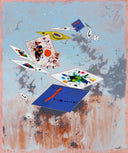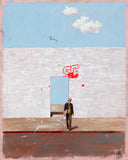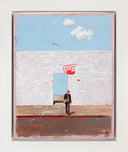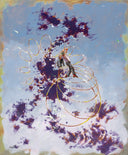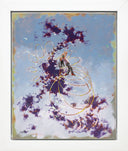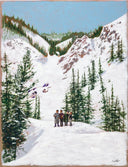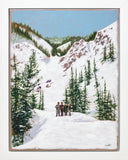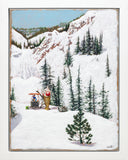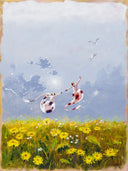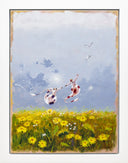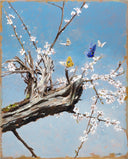About the Artist
Philippe Bertho (b. 1964) is a French contemporary painter who reinvents the centuries-old tradition of trompe l’œil with humor, wit, and a distinctly theatrical sense of play. Classically trained in Reims during the early 1990s, Bertho first mastered decorative illusionism before breaking free to create his own surreal worlds. Today, his canvases are populated by tiny, mischievous figures who perform, explore, and tumble through impossible spaces—part illusion, part narrative, and entirely Bertho.

What sets Bertho apart is his use of physical characterization, inspired as much by the art of mime and performance as by the visual arts. His figures draw from sources as varied as Norman Rockwell, Monty Python, and the slapstick traditions of cinema. A man borrowed from Rockwell’s baseball Americana peers nervously from beneath a painted curtain; a regiment of Monty Python–like soldiers marches absurdly across a landscape. These references ground Bertho’s dreamlike inventions in a shared cultural memory, while his characters’ expressive gestures transform each scene into a miniature theater.
Though rooted in trompe l’œil precision, Bertho’s art is never about illusion alone. It is about storytelling, surprise, and delight: a witty dialogue between high craft and everyday humor, between Pop culture and fine art tradition. Just as importantly, his work is consciously free from fear. At a time when the media often surrounds us with anxiety and negativity, Bertho’s paintings offer an antidote, worlds filled with curiosity, playfulness, and inspiration.
In Bertho’s world, the boundaries between painting and performance dissolve. His characters invite us not only to look more closely but also to laugh, wonder, and imagine what it might feel like to step inside the picture ourselves.





